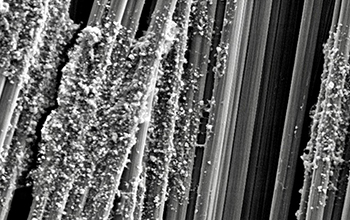
Research News
Study of lovebirds’ flight could lead to better visual control algorithms for autonomous aerial robots
July 16, 2019
While pilots rely on radio signals, advanced computations and other tools to keep them on course during strong crosswinds, birds can naturally navigate these demanding conditions — in environments with little visibility.
To understand how, Stanford University mechanical engineer David Lentink and colleagues studied lovebirds flying in a crosswind tunnel that features customizable wind and light settings.
The results, published in Proceedings of the National Academy of Science, could inspire more robust and computationally efficient visual control algorithms for autonomous aerial robots.
This is the first study of how birds orient their bodies, necks and heads to fly through extreme 45-degree crosswinds over short ranges — both in bright visual environments and in dark, cave-like environments, where faint points of light are the only beacons. The lovebirds navigated all environments equally well.
The researchers found that lovebirds navigate by stabilizing and fixating their gaze on the goal, while yawing their bodies into a crosswind. Staying on course requires them to contort their necks by 30 degrees or more. A computer-simulated model indicated that, while neck control is active, body reorientation into the wind is achieved passively.
“Airplanes have a vertical tail to orient stably into the wind,” said Lentink. “We discovered why birds don’t need one: their flapping wings don’t only offer propulsion — they also orient into the wind passively like a weathervane.”
Added Kathy Dickson, a program officer in NSF’s Division of Integrative Organismal Systems, which funded the study, “This integrative research used innovative technological advancements to bring studies of animal movement from closely controlled conditions in the laboratory into the field, where unsteady and intermittent flows are more the norm. The work provides unexpected insights into how birds adjust their bodies when encountering crosswinds and navigate through unstable air flows, even at night with limited visual cues.”
—
NSF Public Affairs,
(703) 292-8070 media@nsf.gov
Source: NSF News
Brought to you by China News






